Clothing microplastics polluting – In Emmen the solution must be invented for polluting microplastics in clothing 03-10-2023
Clothing microplastics polluting
Crude Oil Prices Trend
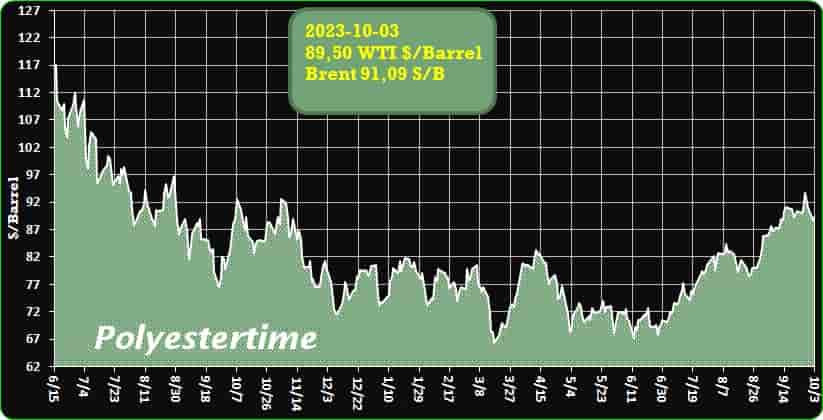
Crude Oil Prices Trend by Polyestertime
In Emmen the solution must be invented for polluting microplastics in clothing
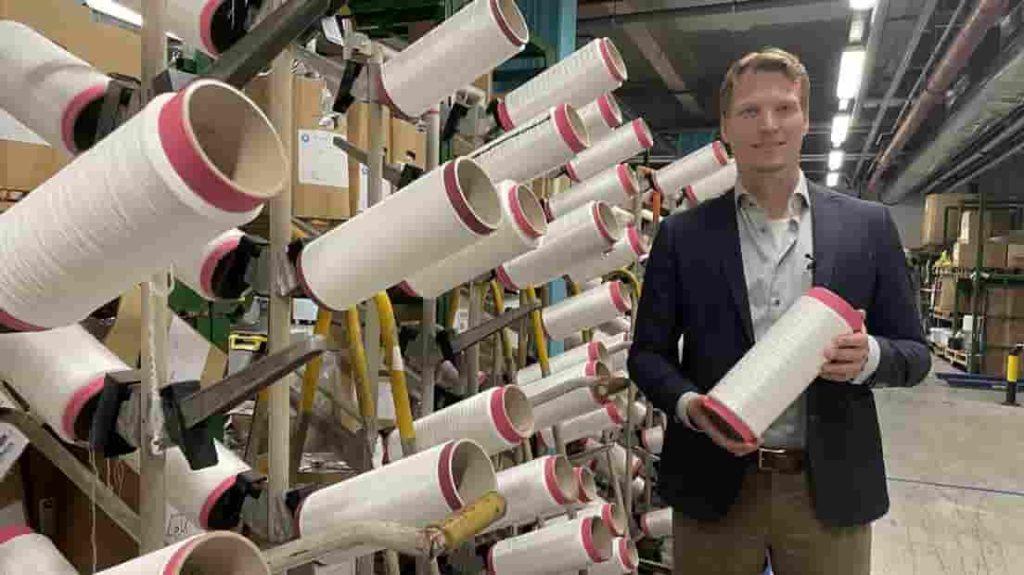
Traceless secures €36.6m in series A funding round
“The Blue Ocean fund seeks to invest in startups bringing innovative solutions to address the 3 main threats to our ocean: overfishing, ocean pollution and climate change. As plastic pollution is one of the main pollutants threatening our ocean, we were seduced by Traceless,” said Olivier Raybaud, managing director of SWEN Capital Partners.
“The traceless team has achieved extremely strong results in terms of material performance, development times and commercialisation of the new material. We are looking forward to accompanying Anne, Johanna and the team in the scale up of this innovative technology,” added Sakari Saarela, partner at UB FIGG.

KHS exhibits cutting-edge filling equipment and resource-conserving packaging systems at BrauBeviale
Nature MultiPack with new universal adhesive for PET bottles
After a four-year break the beverage industry returns to Nuremberg: at BrauBeviale from November 28 to 30 KHS will be presenting its extensive portfolio of cutting-edge filling technology and resource-conserving packaging systems. The modular Innofill Glass DRS ECO filling system will be the center of attention at KHS’ trade show booth – a veritable success story whose consumption values and product quality prove convincing. Nature MultiPack (NMP) is also setting standards as one of the most sustainable types of secondary packaging currently on the market. Following the introduction of a universal adhesive for the beverage can segment, in the future KHS will now be offering this for PET, too. The KHS portfolio is rounded off by a number of digital service products, among them intelligent systems for remote diagnosis and maintenance and a range of additional virtual training courses. Clothing microplastics polluting
From the beverage can to the PET bottle: the universal Nature MultiPack adhesive is now also available for plastic containers.Photo – KHS
The last successful trade show in Nuremberg in 2019 attracted around 40,000 visitors from 138 different countries of the world. For KHS as the second-largest exhibitor, this is reason enough to present the global beverage industry with its latest developments, as Kai Acker, CEO of KHS GmbH, emphasizes: “We’re very excited about finally returning to Nuremberg after such a long break and convincing our international trade visitors of our profitable and sustainable systems and solutions.” Clothing microplastics polluting
Pioneer in efficiency and conversing resources
This is exactly where the Innofill Glass DRS ECO comes in. Since its launch in 2019, the modular glass filler has been installed many times over throughout the world. Its success is primarily attributable to its special evacuation and CO2 purging process for glass bottles. Here, during pre-evacuation air – and thus oxygen – is first removed from the containers before they are then purged with a precisely dosed amount of carbon dioxide. The result is compelling: the machinery lets less oxygen into the beer – and in doing so consumes up to 60% less CO2. The less carbon dioxide used per filled bottle, the more efficient the filling process. “Low-oxygen filling brings product quality up to a new level and thus ensures perfect enjoyment of the beer,” explains Acker. Clothing microplastics polluting
At the trade show KHS will also be focusing on reducing packaging materials – and thus supporting the circular economy. Following the successful launch of a universal adhesive for beverage cans, KHS is now also offering this pioneering streamlined consumable for plastic bottles. Still one of the most environmentally-friendly secondary packaging styles on the market, PET containers of practically any shape, size or material thickness can now be joined together using just one type of adhesive. This is facilitated by a special process where the adhesive is foamed during application to the containers. The new system also increases the level of convenience for the consumer, as bottles are easier to separate. Moreover, the outer wall of the PET container is subjected to less stress when the pack is opened, meaning that even with lightweight bottles with a very low wall thickness overload and damage are more or less totally ruled out. Clothing microplastics polluting
Digital systems a fixed feature of the KHS service portfolio
KHS is not only smart and intelligent with respect to its filling and packaging expertise; its digital service portfolio is also a feature of this year’s trade show booth. With ReDiS (Remote Diagnostic Service) the systems supplier already supplies a highly efficient method of remote maintenance. This enables system disruptions to be analyzed and remedied and software updates and modified system parameters to be uploaded to the machinery at any time on consultation with the customer. KHS provides additional help to make troubleshooting more time- and cost-effective with its ARS or Augmented Reality Service. According to the principle of ‘I see what you see’, support engineers gain a clear picture of the situation through the smart glasses worn by the user and line availability is thus quickly restored. Clothing microplastics polluting
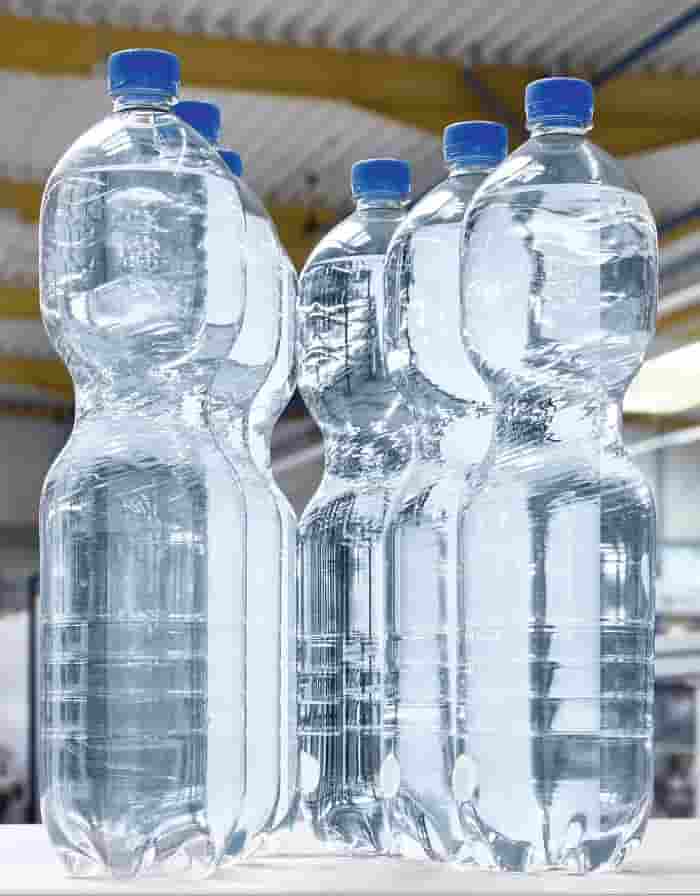
Why BRICS matters for Pakistan
BRICS represents Brazil, Russia, India, China and South Africa, encompassing 41% of the global population and 24% of the global GDP. The 15th BRICS Summit being held from August 22 to 24 in Johannesburg, South Africa. About 40 countries participated in this year’s BRICS summit where some key decisions were made adding six new members namely Argentina, Egypt, Ethiopia, Iran, Saudi Arabia and the UAE. The new membership will be effective from January 1, 2024.
In a historic first, Pakistan’s participation in the BRICS’s seminar, ahead of the summit, was encouraged by Beijing, which wants to integrate Pakistan into the alliance. However, Pakistan surprised the international community for not being the part of BRICS’s summit in Johannesburg. By joining BRICS, Pakistan could potentially benefit in multiple ways.
First, BRICS is the emerging power Centre of the world. Joining BRICS could open up economic opportunities for Pakistan. Clothing microplastics polluting
The country could engage in trade with other member states, benefiting from their growing economies. Pakistan’s exports could find new markets within the framework of BRICS. Muhammad Karim Ahmed analysed, “These BRICS countries are emerging economies and they have improved their country, their economic conditions, manufacturing, and found markets for themselves through joining the bloc”. Certainly, the economic prosperity will minimize unemployment, poverty and illiteracy in Pakistan.
Moreover, developing nations are dissatisfied with the stringent conditions imposed by western-dominated financial institutions like International Monetary Fund (IMF). BRICS has also created two new financial institutions, the New Development Bank (NDB), also known as the BRICS Bank and the Contingent Reserve Arrangement (CRA). CRA, which has a capital of more than USD 100 billion, can help member states withstand any short-term balance of payment crises. Pakistan if allowed in BRICS, can easily access the USD 100 billion CRA as well as the comparatively lenient loan conditions of NDB, without improving the functioning of the Pakistani state.
Second, BRICS membership could boost Pakistan’s geopolitical leverage by providing a platform to collaborate with other emerging powers on global issues. Pakistan has always been blackmailed by its traditional allies. Becoming a BRICS member could offer Pakistan an opportunity to diversify its diplomatic relationships. As a BRICS member, Pakistan could potentially demand for reforms in global governance structure. This could lead to a more equitable international order. Clothing microplastics polluting
Third, some political analysts suspected that Pakistan’s inclusion in BRICS may generate disturbances with India, leading to a defunct group. However, it appears that India’s opposition to Pakistan joining the bloc is dying down. Recently, Indian Prime Minister Modi has supported BRICS expansion. South African president also welcomed Modi’s remarks, who remarked, “delighted to hear India supporting expansion of the BRICS”. Senator Mushahid Hussain Syed told Arab News that “First of all, Pakistan should apply for membership in BRICS, where the lead role is with China and where India is the weakest link due to its proclivity to be part of the West’s new Cold War against Beijing.” So, BRICS membership will certainly increase Pakistan’s diplomatic leverage with regard to India in the region. Clothing microplastics polluting
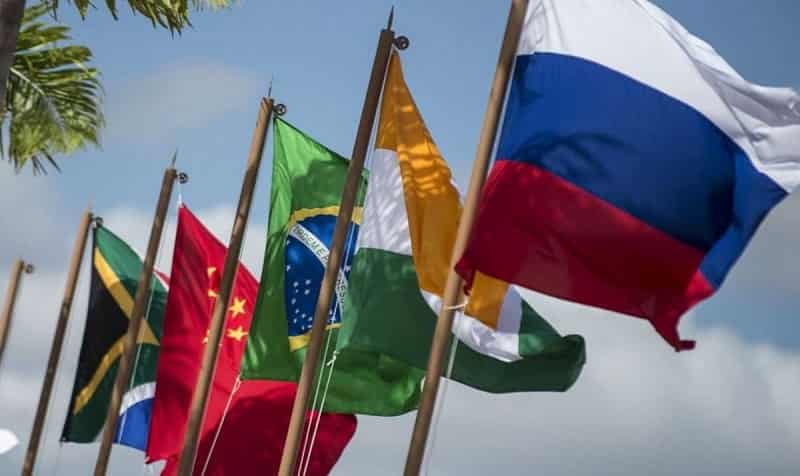
The Population Bomb – A defining question of the 21st century
Fifty years ago overpopulation was a major source of concern around the world. Humanity was growing so rapidly, warned experts, that we’d soon outstrip the carrying capacity of the planet, run out of food, and face collapse. Stanford biologist Paul Ehrlich became a media celebrity after his book “The Population Bomb” was published in 1968, and for years thereafter the topic was central to debates about the environment, the global food supply, and our collective future. And then somewhat suddenly, it wasn’t.
An expanding food supply and falling birthrates in many countries combined to make the worst predictions of the 1970s the stuff of fiction, such as in the 1973 movie “Soylent Green” where the food supply was, shall we say, of human origin. While the total population did grow rapidly, from 2.5 billion in 1950 to over 8 billion now, the rate of increase slowed significantly starting in the mid-1960s and is now less than half what it was at its peak. Clothing microplastics polluting
Recent headlines are now reporting on a predicted population bust — projections for late in this century that could see the human population shrink to perhaps half of what was once expected, possibly as low as 6 billion in 2100 rather than the 11-12 billion previously anticipated. The prospect of slowed growth is at odds with basic assumptions about the global economy, which are predicated on ever-increasing GDPs and economic models driven by mass consumption and cheap labor. With fewer workers and fewer consumers in the future the global economy can only shrink, a notion that puts chills into the hearts of some observers. But would a gradual decline in population really be all that bad?
Today the chief source of concern over our collective future is not the food supply, but the ability of the atmosphere to absorb the greenhouse gasses that modern societies emit. Our reliance on fossil fuels is changing the planet in increasingly unpredictable ways, impacting precipitation patterns, growing seasons, migration routes, sea level, and of course temperatures in ways that may threaten large segments of the human population within our lifetimes. Clothing microplastics polluting
In his book, “The Carbon Footprint of Everything,” author Mike Berners-Lee explains that a sustainable amount of emissions per person is around five tons CO2 equivalent per year as a global average. By his numbers the average American is responsible for about 21 tons per year, over four times our “share” of the global carbon budget. That needs to come down, while the energy footprints of many in developing countries equitably should go up so their standards of living can be improved.
To make room to increase the carbon footprints of the large segment of humanity that needs more resources, the impacts of the global wealthy — especially North Americans and Western Europeans –will have to decrease. But if overall population growth slows to the point of reversal there will be some additional wiggle room, more “carbon capacity” to go around to help the world’s poorest improve their living conditions while ameliorating perhaps some of the most painful impacts on the rest of us as we strive toward a climate-stable future. Clothing microplastics polluting
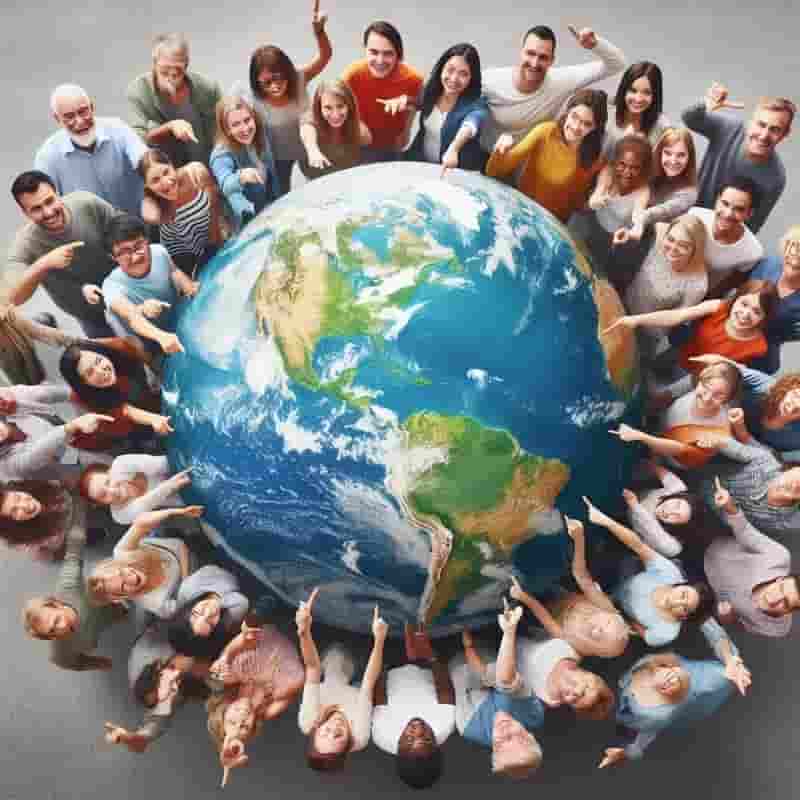
Can BRICS de-dollarise the global financial system?
China is among a number of countries looking to challenge the dominance of the US dollar. PHOTO: REUTERS
The highlight of the 15th BRICS summit was the agreement to admit six new member countries – Argentina, Egypt, Ethiopia, Iran, Saudi Arabia, and the UAE – which will officially join the group on January 1, 2024. “This membership expansion is historic,” said Chinese President Xi Jinping, the bloc’s most stalwart proponent. “It shows the determination of BRICS countries for unity and cooperation with the broader developing countries.”
Another significant outcome of the summit was the group’s declaration to work towards an alternative multilateral currency to replace the dollar. Nicknamed the “bric” by some cheeky observers, this new currency is expected to increase the payment options for emerging markets and developing economies (EMDE), and reduce their vulnerability to dollar exchange rate fluctuations. Obviously, bric will have to compete with special drawing rights (SDRs) and euro, the other currencies popular in the international market. While the hype about a common BRICS currency might be impractical and premature, trading in national currencies is increasingly becoming common. Clothing microplastics polluting
What has driven the BRICS nations to push for their own currency and embark on this journey to depose the dollar from its pedestal? What are the chances that BRICS will be able to de-dollarise the global financial system? The factors contributing to the de-dollarisation initiative are plenty.
The US dollar is used as a reserve currency and a medium of exchange. Countries hold reserves for many reasons, as a buffer to overcome economic shocks, pay for imports, debt servicing, and moderate the value of their own currencies. The dollar is the most commonly held, making up 59 percent of global foreign exchange reserves, and second comes the euro, accounting for roughly 20 percent.
The dollar is also the dominant international medium of exchange. By one measure, it is now used in 84.3 percent of cross-border trade – compared to just 4.5 percent for the Chinese yuan. Clothing microplastics polluting
The call for de-dollarisation did not come out of the blue. World leaders and economists have expressed their desire to dethrone the dollar since the 1960s. Former Bank of England governor Mark Carney told central bankers at the Jackson Hole Symposium in 2019 that the dollar’s dominance is the “destabilising asymmetry” growing “at the heart of international monetary and financial system.”
However, while there has been very little progress in that area, the urgency has increased recently. Extensive US sanctions have driven some countries to transact in other currencies, accelerating the urgency for de-dollarisation. The US relies upon the dollar’s dominant currency status to exercise “coercive economic statecraft” and sanction its adversaries. Clothing microplastics polluting

Global net-zero emissions by 2050 possible but with urgent action: IE
INSIGHTS
- IEA Net Zero Roadmap reveals that limiting global warming to 1.5 degrees Celsius is achievable but requires rapid action and international cooperation.
- The roadmap outlines plans for tripling renewable energy, boosting energy efficiency, and reducing fossil fuel demand, while emphasising an equitable global transition.
- Delays could make targets unattainable.
Driving greenhouse gas emissions from the world’s energy sector to net zero and limiting global warming to 1.5 degrees Celsius remains possible due to the record growth of key clean energy technologies, though momentum needs to increase rapidly in many areas, according to a new edition of the International Energy Agency’s (IEA) landmark Net Zero Roadmap. Clothing microplastics polluting
The roadmap emphasised the need for increased ambition and stronger international cooperation to achieve global climate goals, as per IEA.
Despite increased investment in fossil fuels and persistently high emissions, record growth in solar power capacity and electric vehicle sales indicate that achieving net-zero emissions by mid-century is still attainable. These technologies alone are expected to contribute one-third of the emissions reductions needed by 2030. Moreover, the role of yet-to-be-commercialised technologies in emissions reduction has fallen from nearly 50 per cent in 2021 to around 35 per cent in the 2023 update. Clothing microplastics polluting
For bolder action, the updated roadmap calls for a tripling of global renewable power capacity and doubling the annual rate of energy efficiency improvements by 2030. Additionally, it advocates for a 75 per cent reduction in energy sector methane emissions and a sharp rise in electric vehicles and heat pumps sales. These strategies are based on proven and often cost-effective technologies, which are projected to deliver over 80 per cent of the necessary emissions reductions by the end of the decade.
The roadmap also stresses the need for an equitable transition, taking into account national circumstances. For example, advanced economies should reach net zero sooner to allow emerging and developing economies more time. The pathway also seeks to provide modern forms of energy to all by 2030, requiring an annual investment of nearly $45 billion—just over 1 per cent of energy sector investment. Clothing microplastics polluting
However, most countries need to advance their targeted net zero dates and significantly increase investments, especially in emerging and developing economies. Global clean energy spending is expected to rise from $1.8 trillion in 2023 to $4.5 trillion annually by the early 2030s.
In the updated scenario, fossil fuel demand would fall by 25 per cent by 2030 and by 80 per cent by 2050. This eliminates the need for new long-lead-time upstream oil and gas projects, as well as new coal mines and unabated coal plants. However, investments are still needed for some existing oil and gas assets. Clothing microplastics polluting
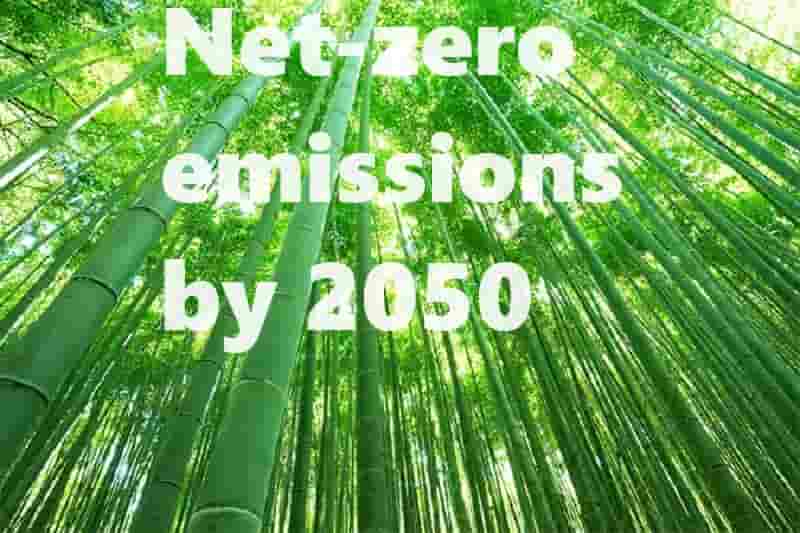
Petrochemicals PET-Bottle – Germany’s 2023 GDP expected to decline by 0.6% 02-10-2023
Clothing microplastics polluting
